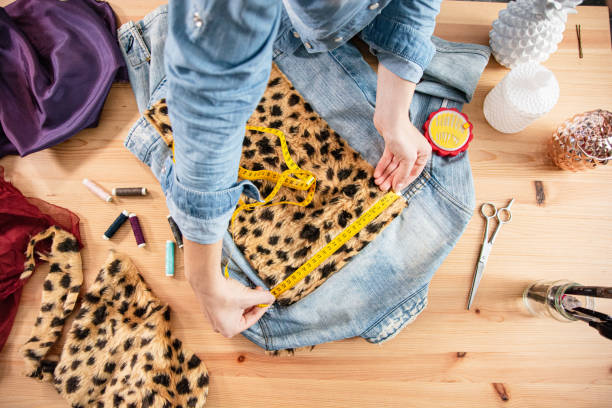Fashion Upcycling: Tech for Sustainable Style
In this article, we'll delve into the innovative ways technology is transforming the concept of upcycling, breathing new life into old garments and accessories while minimizing waste and environmental impact.

Introduction

Fashion upcycling is a burgeoning trend in the fashion industry, fueled by a growing concern for sustainability and environmental conservation. In this article, we'll delve into the innovative ways technology is transforming the concept of upcycling, breathing new life into old garments and accessories while minimizing waste and environmental impact.
Understanding Fashion Upcycling
Fashion upcycling involves the process of repurposing old or discarded clothing and accessories to create new, stylish pieces. Unlike traditional recycling, which breaks down materials to create new products, upcycling focuses on enhancing the value and quality of existing items.
The Role of Technology
Technology plays a pivotal role in modern fashion upcycling, enabling designers and artisans to reimagine and recreate fashion pieces in innovative ways. From advanced manufacturing techniques to cutting-edge design software, technology opens up a world of possibilities for sustainable style.
3D Printing and Customization
One of the most exciting developments in fashion upcycling is the use of 3D printing technology. This revolutionary technique allows designers to create customized garments and accessories using recycled materials, offering endless possibilities for creativity and personalization.
Smart Textiles and Fabric Recycling
Smart textiles are another area where technology is making waves in fashion upcycling. These innovative fabrics are embedded with sensors and other electronic components, allowing for greater functionality and sustainability. Additionally, advances in fabric recycling technologies are making it easier to transform old textiles into new yarns and fabrics, reducing the need for virgin materials.
AI-Powered Design Solutions
Artificial intelligence (AI) is also playing an increasingly important role in fashion upcycling. AI-driven design solutions analyze vast amounts of data to identify trends and patterns, helping designers create more sustainable and innovative fashion pieces. From predictive modeling to virtual prototyping, AI is revolutionizing the way fashion is created and consumed.
Advantages of Fashion Upcycling
Fashion upcycling offers several key advantages over traditional manufacturing methods. First and foremost, it helps reduce the environmental impact of the fashion industry by minimizing waste and conserving resources. Additionally, upcycled fashion pieces are often unique and one-of-a-kind, allowing individuals to express their personal style while supporting sustainable practices.
Conclusion
In conclusion, technology is playing an increasingly important role in fashion upcycling, driving innovation and sustainability in the fashion industry. By harnessing the power of 3D printing, smart textiles, and AI-driven design solutions, designers and artisans are able to create stylish, eco-friendly fashion pieces that are both unique and sustainable. As consumer demand for sustainable fashion continues to grow, we can expect technology to play an even larger role in shaping the future of fashion upcycling..